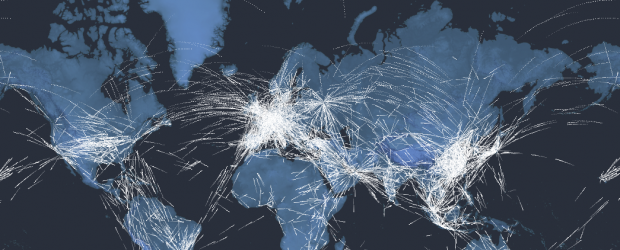Korea’s Jeju-Seoul and Australia’s Melbourne-Sydney were the world’s busiest domestic air routes in 2017 while Hong Kong-Tapei Taoyuan topped the list of international routes.
But it was US citizens that flew the most, with 632 million passengers accounting for 18.6 percent of the world total.
Figures released Thursday by the International Air Transport Association confirm that airlines carried more than 4 billion passengers for the first time ever and provided regular services to more than 20,000 city pairs.
The number of city pairs was more than double the level in 1995.
“In 2000, the average citizen flew just once every 43 months,’’ IATA director general Alexandre de Juniac said in releasing the 62nd World Air Transport Statistics yearbook.
“In 2017, the figure was once every 22 months. Flying has never been more accessible. And this is liberating people to explore more of our planet for work, leisure and education.”
READ: IATA urges action on Indian aviation bottlenecks.
Jeju- Seoul topped the list of domestic routes with 13.5 million passengers, up 14.8 percent on 2016. Melbourne-Sydney came a distant second with 7.8 million passengers, up 0.4 percent.
It was followed closely by Fukuoka-Tokyo Haneda (7.6 million), Sapporo-Tokyo Haneda (7.4 million) and Beijing Capital-Shanghai Hongqiao (6.4 million).
For International routes, Hong Kong-Taipei Taoyuan (5.4 million) was followed by Jakarta -Singapore (3.3 million), Bangkok Suvarnabhumi-Hong Kong (3.1 million), Kuala Lumpur–Singapore (2.8 million) and Hong Kong-Seoul Incheon (2.7 million).
US carriers dominated the top five airlines with Dubai-based Emirates the only outsider.
The list was led by American Airlines (324 million) followed by Delta Air Lines (316.3 million), United Airlines (311 million), Emirates (289 million) and Southwest Airlines (207.7 million).
A regional breakdown of the 4.1 billion passengers traveling globally saw the Asia Pacific well in the lead with a 36.3 percent market share and 1.5 billion passengers, up 10.6 percent on 2016.
It was followed by Europe with a 26.3 percent market share and 1.1 billion passengers, North America (23 percent, 942 million passengers) Latin America (7 percent, 286m passengers) the Middle East (5.3 percent, 216 million passengers0 and Africa (2.2 percent and 88.5m passengers)…



